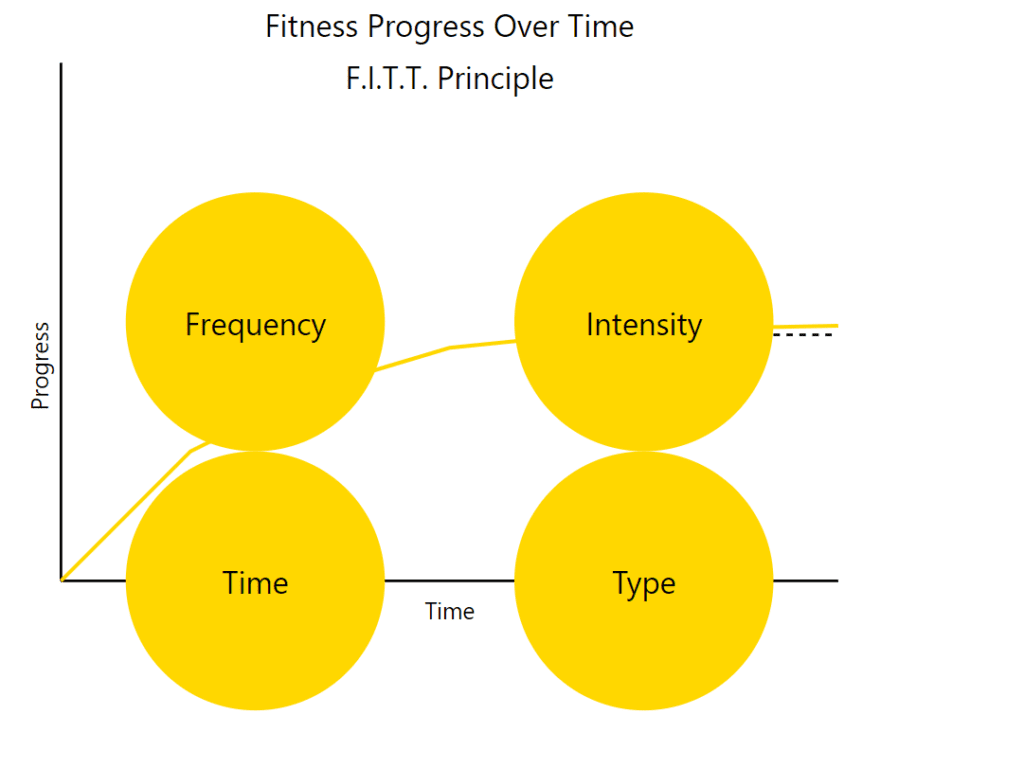
Overcoming Plateaus in Fitness Training
Hitting a plateau in your fitness journey can be frustrating and demotivating. Despite consistent efforts, you may find yourself struggling to make further progress. This comprehensive guide will delve into effective strategies to help you overcome plateaus and continue advancing in your fitness training, drawing insights from expert sources and the latest research in exercise science.
Understanding Training Plateaus
Training plateaus are periods of stagnant progress or a temporary halt in achieving desired fitness outcomes despite consistent training efforts. They occur when the body adapts to the physical demands of a specific exercise routine, leading to a decrease in the rate of improvement.
Factors Contributing to Plateaus
- Adaptation: The human body is remarkably adaptable and efficient at responding to physical stress. Over time, your body becomes more efficient at performing familiar exercises, resulting in a slowdown of improvement.
- Insufficient Stimulus: Plateaus can occur when your training stimulus becomes insufficient to elicit further adaptations. Your body needs progressive overload to continue making progress.
- Overtraining: Pushing your body beyond its capacity to recover adequately can result in decreased performance, fatigue, and an inability to make further gains.
Duration and Impact of Plateaus
Plateaus can last from a few weeks to several months, depending on factors such as training history, specific fitness goals, and the effectiveness of strategies employed to overcome them. The impact is both physical (stalled progress) and psychological (frustration and demotivation).
Identifying the Signs of a Plateau
Recognizing the signs of a plateau is crucial for taking corrective action:
- Lack of progress despite consistent efforts
- Repetitive routines leading to boredom and decreased effectiveness
- Decreased motivation and enthusiasm for exercising
- Persistent fatigue or excessive soreness
- Stagnant performance metrics (e.g., weight lifted, running times)
Reassessing Your Goals and Training Program
To break through a plateau, it’s essential to reassess your current training program:
- Define specific, measurable, achievable, relevant, and time-bound (SMART) goals
- Analyze the effectiveness of your exercises and routines
- Consider incorporating variation in your workouts
- Track progress through regular measurements and assessments
6 Effective Strategies to Overcome Training Plateaus
1. Progressive Overload and Variation
Implement progressive overload by gradually increasing the demands placed on your muscles over time. This can be achieved by:
- Increasing weight, reps, or sets
- Enhancing exercise intensity
- Reducing rest periods between sets
Incorporate exercise variations to provide fresh stimuli:
- Use different equipment (e.g., barbells, dumbbells, resistance bands)
- Change exercise angles or grip positions
- Try alternative movements targeting the same muscle groups
Sample techniques:
- Supersets: Performing two exercises back-to-back with no rest
- Drop sets: Reducing weight after reaching failure to continue the set
- Pyramid sets: Gradually increasing or decreasing weight across sets
- Circuit training: Performing a series of exercises with minimal rest
2. Periodization and Deloading
Implement a structured approach to training by dividing your program into specific phases:
- Macrocycles: Long-term training periods (e.g., 6-12 months)
- Mesocycles: Medium-term training blocks (e.g., 4-6 weeks)
- Microcycles: Short-term training periods (e.g., 1 week)
Incorporate deloading periods:
- Reduce training volume and intensity for 1-2 weeks
- Allow for recovery, tissue repair, and performance supercompensation
3. Cross-Training and Conditioning
Diversify your training routine by incorporating different exercise modalities:
- Swimming
- Cycling
- Yoga
- Dance classes
- Martial arts
Implement High-Intensity Interval Training (HIIT):
- Short bursts of intense exercise followed by periods of active recovery
- Improves cardiovascular capacity, boosts metabolism, and promotes muscle growth
4. Nutrition and Recovery Optimization
Fuel your workouts and aid recovery with a well-balanced nutrition plan:
- Ensure adequate protein intake for muscle repair and growth
- Consume complex carbohydrates for sustained energy
- Include healthy fats for hormone production and overall health
- Stay hydrated before, during, and after workouts
Prioritize recovery:
- Get 7-9 hours of quality sleep per night
- Incorporate active recovery techniques (e.g., stretching, foam rolling)
- Consider sports massage or other recovery modalities
5. Mental Strategies and Goal Setting
Overcome mental barriers:
- Practice positive self-talk and visualization techniques
- Set both short-term and long-term goals
- Celebrate small victories and milestones
- Seek support from workout partners or join fitness communities
6. Utilize the F.I.T.T. Principle
Adjust your training program using the F.I.T.T. principle:
- Frequency: Increase or decrease workout frequency (3-5 days per week)
- Intensity: Adjust workout intensity (64-76% of max heart rate for moderate intensity, 77-93% for vigorous intensity)
- Time: Modify workout duration (20-60 minutes per session, aiming for 150 minutes of moderate-intensity or 75 minutes of vigorous-intensity activity per week)
- Type: Vary exercise types (e.g., cardio, strength training, flexibility work)
Monitoring Progress and Making Adjustments
Track your progress using:
- Workout journals
- Fitness tracking apps
- Regular body measurements and assessments
Assess performance and feedback:
- Monitor energy levels
- Watch for signs of fatigue or overtraining
Make necessary adjustments:
- Modify exercise selection
- Adjust training volume and intensity
- Reevaluate workout frequency and rest periods
- Seek guidance from fitness professionals when needed
The Importance of Rest and Recovery
While pushing through plateaus is important, it’s equally crucial to recognize the value of rest and recovery in your fitness journey. Proper rest allows your body to repair, adapt, and grow stronger. At PhuketFit, the leading Weight Loss and Fitness Retreat in Phuket, we emphasize the importance of balanced training programs that include adequate rest periods.
For more insights on why rest days are critical to your fitness plan, check out our blog post: Why Rest Days Are Critical to Your Fitness Plan. This article delves into the science behind recovery and provides practical tips for incorporating effective rest into your routine.
Mental Wellness and Goal Setting
Overcoming plateaus isn’t just about physical training—it’s also about maintaining the right mindset. Mental wellness plays a crucial role in achieving your fitness goals and pushing past obstacles. At PhuketFit, we offer comprehensive programs that address both the physical and mental aspects of fitness.
To learn more about developing the right mindset for fitness goal setting and achievement, read our blog post: Mental Wellness: The Mindset for Fitness Goal Setting and Achievement. This resource provides valuable strategies for maintaining motivation, setting realistic goals, and cultivating a positive mental attitude throughout your fitness journey.
Conclusion
Overcoming fitness plateaus requires a multi-faceted approach addressing both physical and mental aspects of training. By implementing the strategies discussed in this article, such as progressive overload, periodization, cross-training, nutrition optimization, and mental techniques, you can successfully break through plateaus and achieve continued progress in your fitness journey.
Remember that consistency, patience, and a willingness to adapt are key to long-term success. Stay committed to your goals, trust the process, and don’t hesitate to seek professional guidance when needed.
If you’re looking for a transformative experience to jumpstart your fitness journey or break through stubborn plateaus, consider visiting PhuketFit. Our comprehensive Weight Loss and Fitness Retreat programs are designed to help you achieve your goals in a supportive, expert-led environment. With personalized training, nutrition guidance, and a focus on both physical and mental wellness, PhuketFit can provide the boost you need to unlock your full fitness potential and achieve new heights in your training.

